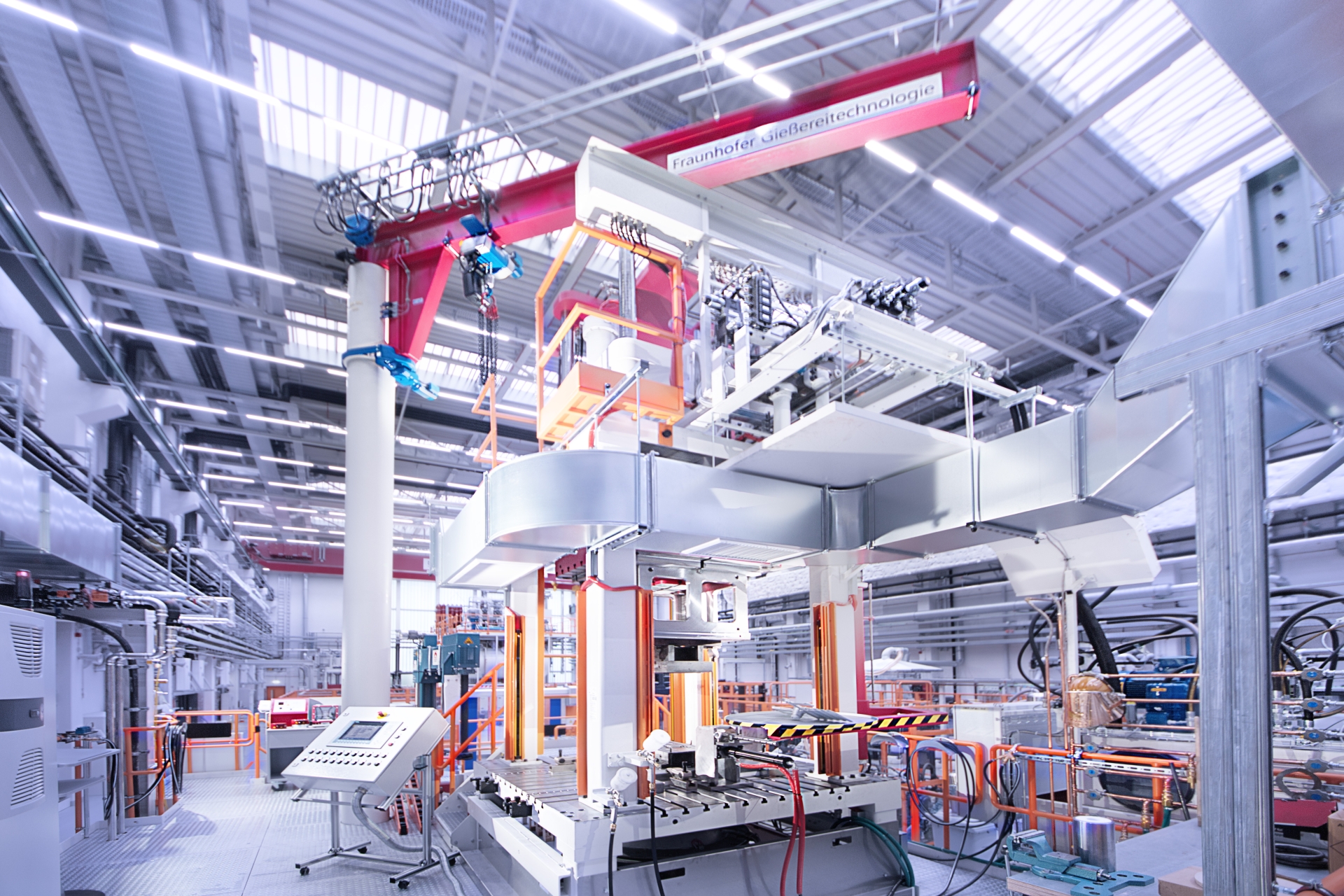The LPDC facility with a hydraulically driven clamping unit and an extendable melt and warming furnace serves for the casting of metallic and non-metallic materials. In the low-pressure casting process, components can be manufactured with the highest demands on casting quality, casting component complexity, material selection and material properties. With the low-pressure-die-casting facility at the Open Hybrid LabFactory, an automated casting operation close to series production can be demonstrated. The inductive shuttle furnace enables the use of various casting materials, such as aluminum, magnesium, steel, copper, brass, and salt.
Due to the flexibility regarding production quantity, the manufacture of prototypes is just as possible as series production. A special feature is the production of hybrid cast components. In the so-called hybrid casting, various material combinations such as aluminum-fiber reinforced plastics, aluminum- steel, aluminum-aluminum, or aluminum-plastic is possible. A further focus point lies on the development of new products and the production possibilities for electric drives. Examples for such components are cast coils, stator housing, and infiltrated bundles of laminates.
Further information to Casting-Technology.
 Fraunhofer Project Center Wolfsburg
Fraunhofer Project Center Wolfsburg